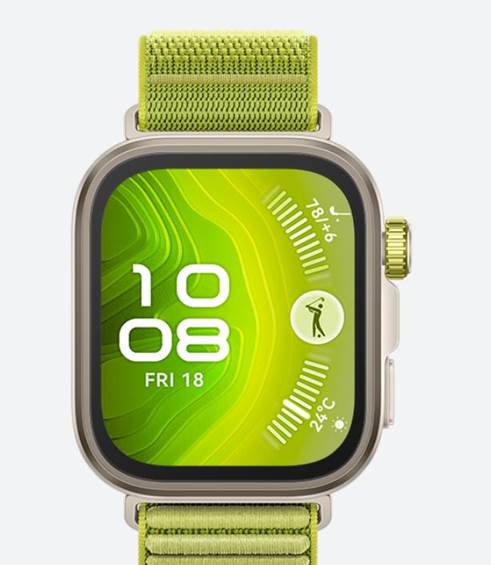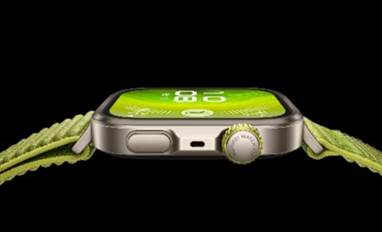Smartwatches have evolved into indispensable tools
that offer more than just timekeeping. They monitor health metrics, provide
instant notifications, and facilitate seamless communication. Understanding the
technology behind these devices reveals how they integrate various components
to deliver such functionalities. These compact devices combine advanced
hardware and software to offer features once reserved for smartphones. From
tracking fitness goals to managing daily schedules, smartwatches have become integral
to our daily routines. Their ability to sync with other devices ensures that
users stay connected, informed, and in control, all from their wrists. As
technology continues to advance, smartwatches are poised to offer even more
capabilities, further solidifying their place in the tech ecosystem. For
instance, the Huawei Watch Fit 4 Pro exemplifies this evolution, featuring a 1.82-inch AMOLED display,
advanced health monitoring sensors, and up to 10 days of battery life, making
it a compelling choice for those seeking a comprehensive wearable experience.

Core Components of a Smartwatch
Delving into the internal structure of smartwatches
uncovers the hardware that powers their capabilities. These components work in
harmony to deliver a seamless user experience.
Processors and Memory
At the heart of every smartwatch lies a processor that
manages tasks and ensures smooth operation. Complementing the processor is
memory, which stores data and applications, enabling quick access and
multitasking capabilities. Modern smartwatches utilize energy-efficient
processors to balance performance with battery life. The integration of
sufficient RAM allows for the smooth running of multiple applications
simultaneously. This combination ensures that users experience minimal lag and
swift responsiveness, enhancing overall usability. As applications become more
sophisticated, the demand for robust processing power and memory capacity
continues to grow, pushing manufacturers to innovate further.
Displays and Touchscreens
Smartwatches feature advanced displays that provide
clear visuals and responsive touch interfaces. These touchscreens allow users
to navigate through apps, respond to messages, and customize watch faces with
ease. High-resolution screens ensure that information is easily readable, even
in bright sunlight. The incorporation of durable materials, such as
scratch-resistant glass, enhances longevity. Some models also offer always-on
displays, allowing users to glance at information without activating the screen
fully. As display technology advances, users can expect even more vibrant
colors, sharper images, and improved energy efficiency, further enriching the
smartwatch experience.
Essential Sensors and Their Functions
Sensors are integral to a smartwatch's ability to
monitor health and activity. They collect data that empowers users to make
informed decisions about their well-being.
Health Monitoring Sensors
Smartwatches are equipped with various sensors to
track health metrics. These sensors provide real-time data, helping users stay
informed about their health status and detect potential issues early. For
instance, heart rate monitors continuously track the user's pulse, alerting
them to irregularities. Blood oxygen sensors measure the oxygen saturation in
the bloodstream, providing insights into respiratory efficiency. Sleep tracking
features analyze sleep patterns, helping users improve their rest quality. Some
devices also include stress monitoring, using heart rate variability to assess
stress levels. By compiling this data, smartwatches offer a comprehensive
overview of the user's health, promoting proactive wellness management.
Motion and Environmental Sensors
Beyond health, smartwatches utilize motion sensors
like accelerometers and gyroscopes to track physical activity and movement.
Environmental sensors, such as barometers and ambient light sensors, adjust
display brightness and provide weather-related information. These features
enhance user experience by adapting to surroundings and offering relevant data.
For example, an altimeter can track elevation changes during hikes, while a
compass aids in navigation. Ambient light sensors automatically adjust screen brightness
to conserve battery and improve visibility. By integrating these sensors,
smartwatches offer users a richer, more interactive experience, catering to
both fitness enthusiasts and everyday users.
Connectivity and Communication
Smartwatches rely on various connectivity options to
function effectively. These connections enable seamless data transfer and
communication with other devices.
Wireless Technologies
Bluetooth and Wi-Fi are standard in smartwatches,
enabling them to sync with smartphones and access the internet. Some models
also support LTE connectivity, allowing for calls and messages without a paired
phone. These wireless technologies ensure that users stay connected wherever
they go. Bluetooth facilitates the transfer of data between the smartwatch and
smartphone, such as notifications, music control, and app synchronization.
Wi-Fi connectivity allows smartwatches to access online services independently,
useful when the paired phone is out of range. LTE-enabled models provide even
greater autonomy, enabling users to make calls, send texts, and stream music
directly from their wrists. This level of connectivity ensures that users
remain informed and reachable, even without their primary devices.
Integration with Smartphones
Smartwatches integrate seamlessly with smartphones,
providing notifications, controlling music playback, and even locating the
paired device. This integration extends the functionality of both devices,
offering a cohesive user experience. Users can customize settings and manage
apps directly from their smartphones, enhancing convenience. For instance,
incoming calls and messages can be answered or dismissed from the watch,
reducing the need to access the phone. Calendar events, reminders, and
navigation prompts sync effortlessly, ensuring users stay organized.
Additionally, some smartwatches allow for remote camera control, enabling users
to capture photos from their phones using the watch interface. This symbiotic
relationship between smartwatch and smartphone streamlines daily tasks and
enhances overall productivity.

Operating Systems and Applications
The software ecosystem of a smartwatch determines its
capabilities and user experience. A robust operating system ensures smooth
performance and access to a variety of applications.
Popular Smartwatch Operating Systems
Different smartwatches run on various operating
systems. These operating systems are designed to optimize performance and user
interaction. They provide the framework for app development, user interface
design, and hardware integration. A well-designed OS ensures that the
smartwatch operates efficiently, with minimal lag and intuitive navigation.
Regular updates to the operating system introduce new features, security
enhancements, and performance improvements. Compatibility with a wide range of
applications allows users to tailor their smartwatch experience to their
specific needs, whether for fitness tracking, productivity, or entertainment.
As the smartwatch market grows, operating systems continue to evolve, offering
users more functionality and a better overall experience.
Common Applications and Features
Smartwatches support a plethora of applications that
cater to fitness, productivity, and entertainment. Users can track workouts,
monitor sleep patterns, set reminders, and even stream music. The availability
of diverse apps transforms smartwatches into versatile tools that adapt to
individual lifestyles and preferences. Productivity apps enable users to manage
calendars, receive email notifications, and set task reminders. Fitness
applications provide guided workouts, goal setting, and progress tracking. Entertainment
options include music streaming, podcast playback, and even games. Some
smartwatches offer contactless payment features, allowing users to make
purchases directly from their wrists. This wide range of applications ensures
that smartwatches serve as comprehensive companions for various aspects of
daily life.
Conclusion
Smartwatches are sophisticated devices that combine
advanced hardware and software to offer a multitude of features. From monitoring
health metrics to providing seamless connectivity, they have become
indispensable in modern life. Understanding the technology behind smartwatches
enhances appreciation for these devices and informs better usage. As technology
continues to evolve, smartwatches are poised to offer even more innovative
solutions to meet the dynamic needs of users. Their integration into daily
routines underscores their value, not just as timekeepers, but as essential
tools for health, communication, and productivity. Embracing the capabilities
of smartwatches can lead to a more connected and informed lifestyle, making
them a worthwhile investment for tech-savvy individuals.
